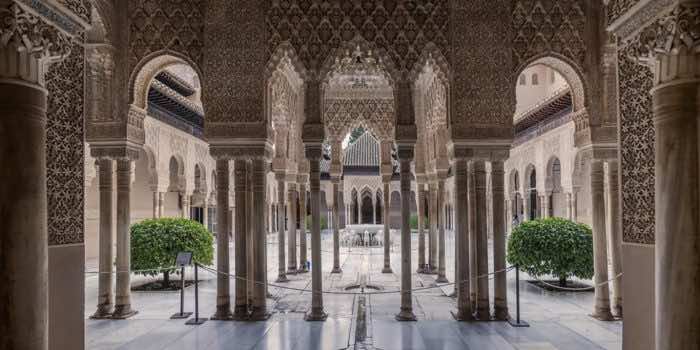Alhambra is an elegant palace constructed by Spain’s early Muslim leaders. It has been in Granada for 800 years. Its colors transition during the day. In the daytime, it looks orange but just towards the end of the day, it turns to a mesmerising reddish-pink!
Its inside is lined with gilded halls. After centuries of natural weathering, parts of the palace’s golden flanks and ornate, whitewashed walls are turning a patchy, dull purple.
“Its origin remained unknown until now,” write University of Granada mineralogist Carolina Cardell and microscopy specialist Isabel Guerra in their published paper.
Gold is one of the least reactive metals, so it should stand the test of time. The precious metal is resistant to sunlight, humidity, air pollution, and baking temperatures, which is why it is such a prized material for crafting jewellery, coins, and more recently, electronic devices – all things you don’t want to degrade.
The transformation of gold’s warm glow to a murky purple is the work of chemistry over time. This is usually caused by nitric acid hydrochloride but till date, no signs of this have been found on the building.

Cardell and Guerra used a scanning electron microscope equipped with an array of spectrometers to research the composition of the gold in Alhambra and find out why it is turning purple.
They were able to find an “unexpected combination of electrochemical processes” might have shaded the damaged surfaces purple.
Some findings implied that it was due to corrosion that the gold was changing colors. However, not all are of the same opinion.

Catherine Louis, a chemist at the Surface Reactivity Laboratory (LRS) in Paris, speaking with APS Physics, said , “it’s amazing that golden material can turn purple over time”, but pointed out that the researchers did not conduct recreation of the corrosion to see if the same effect is observed.
Replicating five centuries of weathering in lab experiments would be quite an ordeal, though, and wouldn’t generate very informative results, Cardell and Guerra argue in their paper.


